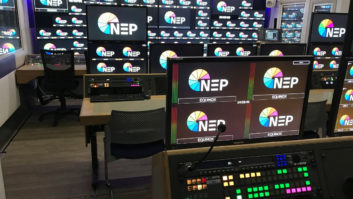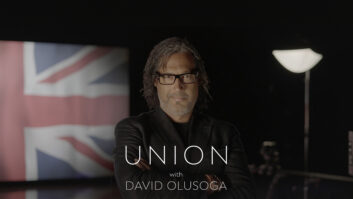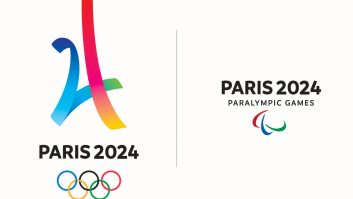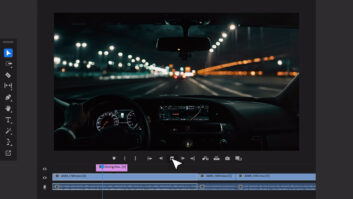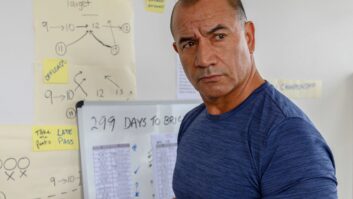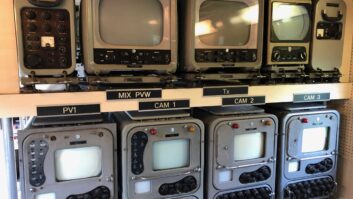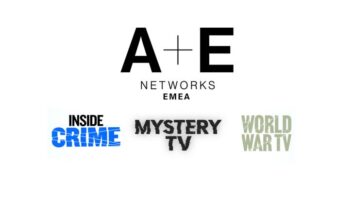For many, Morecambe and Wise are as big a part of Christmas as mince pies, dodgy jumpers and running out of wrapping paper at inopportune moments. Morecambe & Wise in America is a new three-part series coming to UKTV’s Gold channel on 27th December, hosted by Jonathan Ross and featuring such talking heads as Glenda Jackson, Dame Diana Rigg and Nicholas Parsons, alongside footage from Eric and Ernie’s stints on The Ed Sullivan Show never before seen in the UK. TVBEurope speaks to the show’s executive producer Mark Wells, creative director at Double Yellow, about the process of bringing this unseen footage to the British screen.
“I became aware while reading Eric and Ernie’s autobiography that they had done several appearances on The Ed Sullivan Show in New York in the 1960s,” explains Wells, which led him to get in touch with SOFA Entertainment president Andrew Solt, who owns the rights to the Ed Sullivan archive. “They have a very good archivist who works there called Mary Sherwood, and Mary sent me a DVD of the performances. The immediate thing that struck me about them was from a technical point of view they were in incredibly good condition.”
“What was incredible was the sound quality was very very good which really surprised me – bearing in mind that these were live transmissions from a theatre basically… it’s now the theatre that’s used for Stephen Colbert’s show and was used for the Letterman show for many years on Broadway. But the sound was great, the sound was really good quality.”
This meant that very little restoration was required for the footage; a mixture of black-and-white and colour transmissions from 1963-68. “We put it through a grade which really punched up the colour footage in particular and made it look very rich.”
The minimal restoration process also involved the removal of flash frames, as Wells explains: “They were working with very primitive vision mixing consoles in those days so sometimes when they cut between cameras you get a flash, so we were able to replace those frames. But other than that we did very little because we were incredibly impressed with how good the material was technically – particularly when you bear in mind the show went out live.
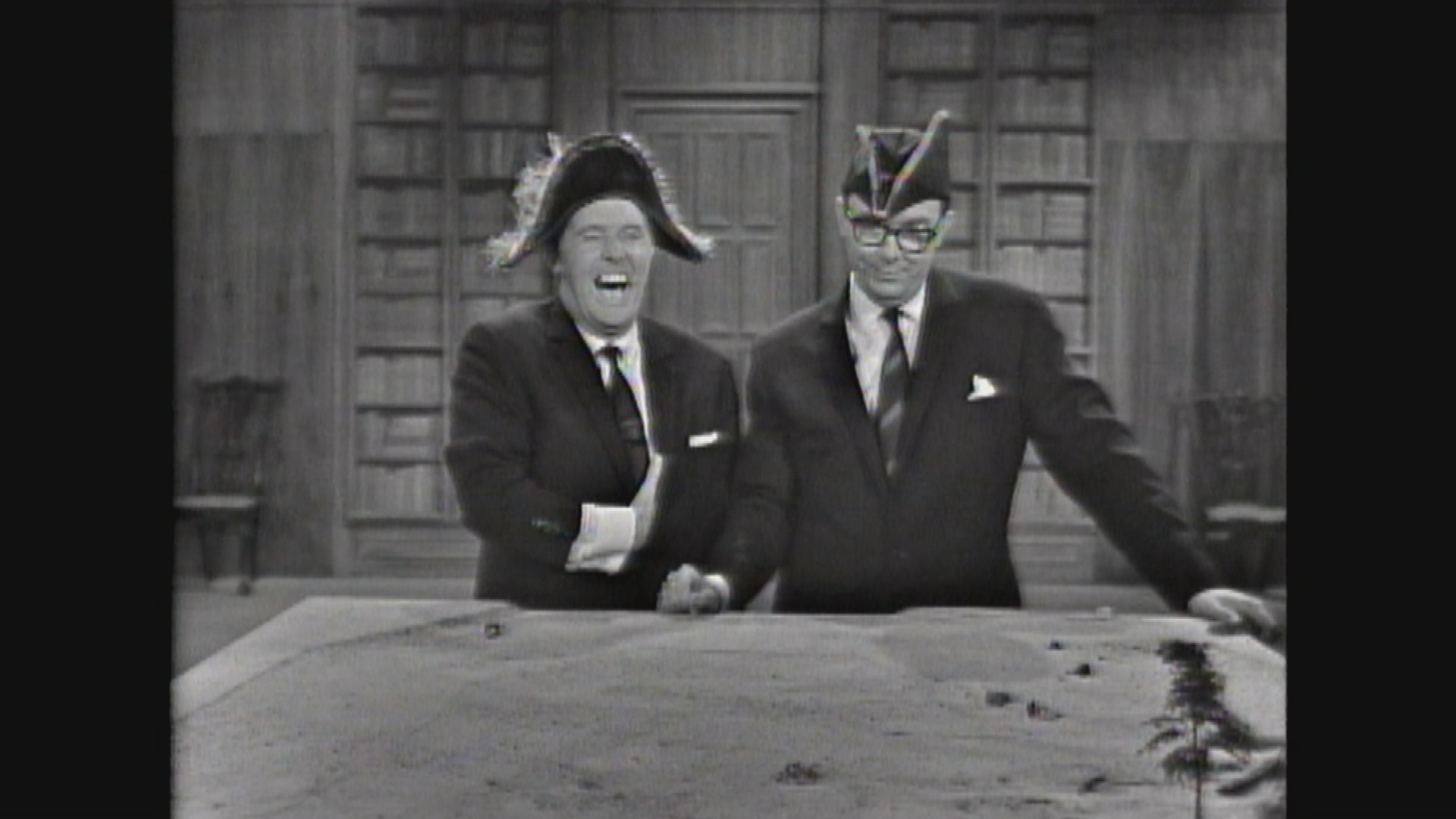
“We took a view with the broadcaster very early on to keep it in a 4:3 aspect ratio. We took the view that the viewers ought to see it in the form in which it was originally produced and transmitted. We also took the editorial point of view that we should try and play the clips quite long – perhaps longer than you would normally in a modern documentary – and again this was to really show the viewers how these things played out at the time,” continues Wells.
The sound too required only subtle modification: “It was in a theatre so there was quite a lot of ambient sound – but from our point of view that was quite useful because a lot of the time in the programmes we were talking about the audience reaction, so being able to hear as much of that as possible is important to us editorially – but we didn’t enhance anything. There were a couple of tiny bits where the speech was slightly muffled so we worked hard to bring that to the front of the mix and so on. But other than that we really didn’t have to because as I say, it was so well preserved in the first place.”
This audience reaction was important to Wells as it helps explain the ways in which Morecambe and Wise had to adapt their act for the American crowd: “After the first performance was heard in near silence, the second week that they were on the show Eric and Ernie realised that they needed to make their act much more physical because that’s what the American audience would respond to. They were used to seeing double-acts doing more physical comedy like Laurel and Hardy or Abbott and Costello.”
As a result, the duo deemphasised their signature cross-talk and wordplay, opting instead for a bigger, broader and more physical style that would influence much of their later work, including the use of props and guest stars. “This gave them the idea of using guest stars more fully in their shows at the BBC, which is why they ended up doing all those big sketches with people like Glenda Jackson, Angela Rippon and Shirley Bassey.”
As well as the Ed Sullivan tapes, the series includes home movie footage from Eric and Ernie themselves, which was in similarly good condition. “It came to us on a hard drive because the estates had been very good at preserving it; realising its value,” explains Wells. “In a sense you don’t want to enhance it too much or improve it too much because it is what it is. It is home movie footage from the period and it’s that authenticity that I think is part of its attraction.”
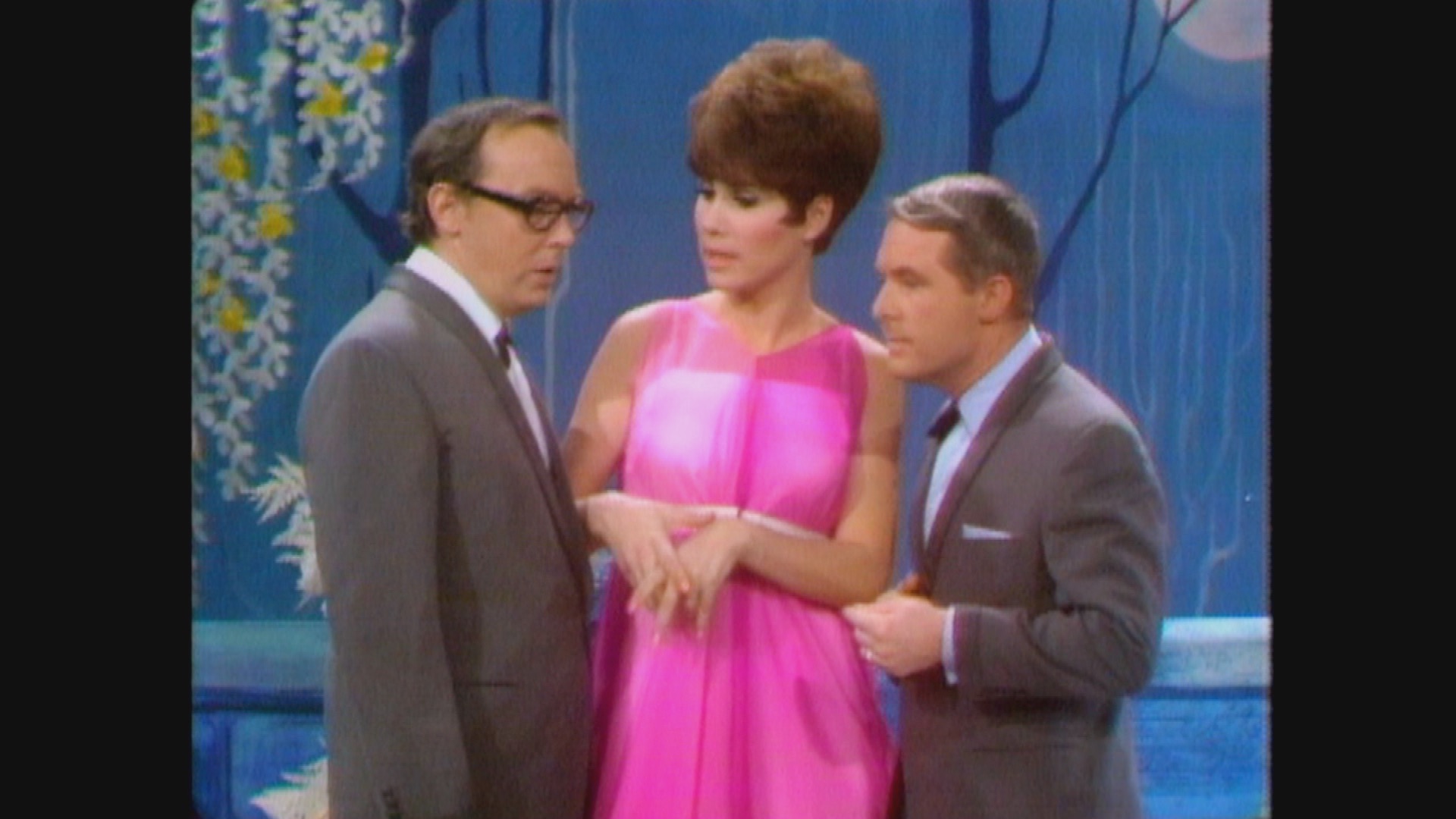
Finally Wells discusses the significance of those New York TV appearances: “It was in America that Morecambe and Wise first worked in colour. And it was when Eric and Ernie saw a telerecording of their performance in colour that made them want to work in colour here in the UK.”
In 1967 Morecambe and Wise filmed a variety series called Piccadilly Palace at the ATV studios in Elstree, shot simultaneously by a British set of cameras taping the show in black-and-white, and American cameras shooting in colour. “So you literally had two sets of cameras on the studio floor at the same time, shooting the same show – and of course you can imagine that might technically be quite a challenge.”
Wells suggests that it was the frustration of filming Piccadilly Palace, combined with the promise of working in colour, that made Eric and Ernie leave ITV to join the BBC in 1968: “So in a strange way working in America had driven them towards the BBC, where they ultimately ended up doing their best work.”
